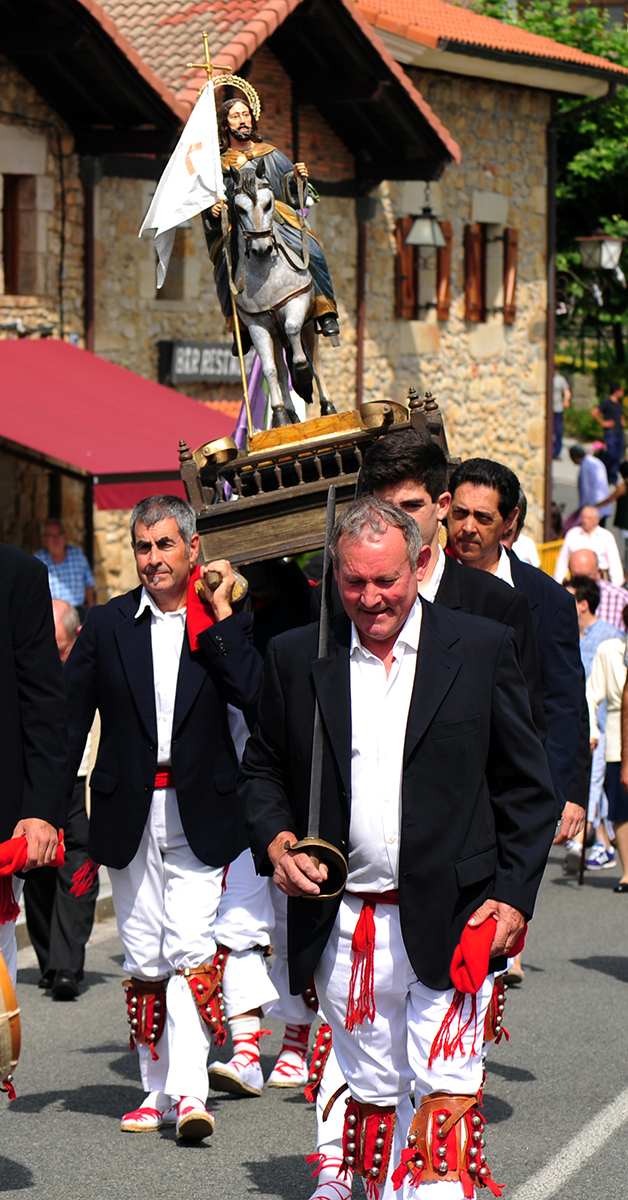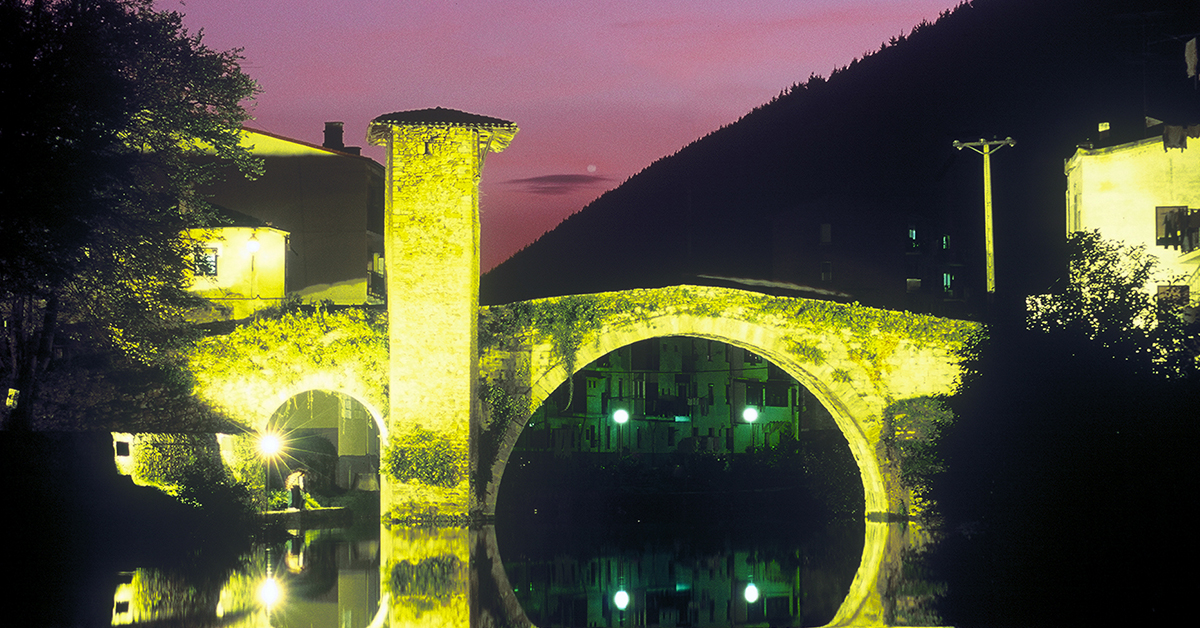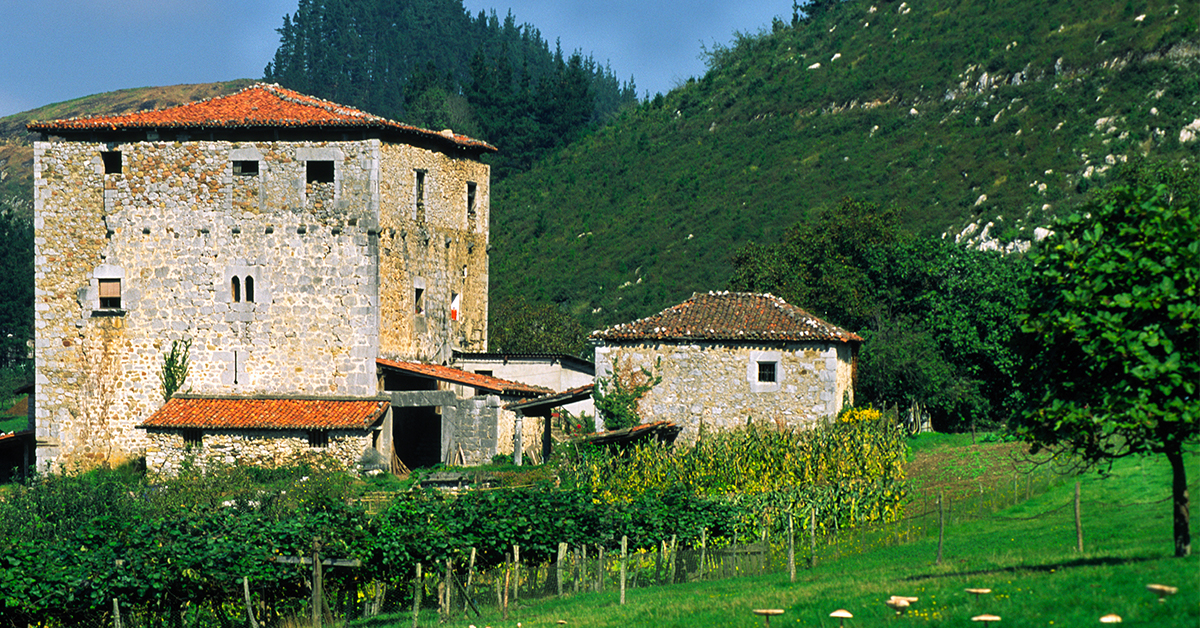Basque ethnography at a glance
Due to the effects of the current pandemic, we are obliged to change our social practices, suspension or postponement of a vast majority of events having been announced. That does not, however, impair the popularity of the feast of James the apostle, customarily celebrated in villages throughout Bizkaia. Particularly worthy of mention among the numerous cultural and artistic manifestations for their choreographic aspect are the Ezpata-dantza, or sword dance, and the Aurresku soloist dance performed in Garai, as well as the time-honoured procession of the image of the saint, represented as the Moor-slayer.
The ancient Northern Way might not enjoy the artistic importance of the French Way, nor is it an issue about 25 July celebrations or institutional declarations on items having been listed as Cultural Property and World Heritage Sites.
Architectural styles blend with legends and old stories, from the three rocks inside the hexagonal church of St Michael of Arretxinaga, between which whoever is looking for a boyfriend or girlfriend, it is said, should pass, to the devil’s bridge, whose name says it all. Cobbled roads which you might come across in the most unexpected places, tower houses which have been silent witnesses of fierce battles, and narrow city streets which served as a true hub for trade and commerce in earlier days, they take us back to medieval times.
And an art-form takes over from another. Indeed, Bizkaia boasts attractive museums, rich with cultural wealth, some traditionally local, others contemporary and global: Museum of the Basque Country in Gernika-Lumo; Fine Arts Museum, Basque Museum, Archaeology Museum and Guggenheim Museum in Bilbao; or Bolívar Museum in the town which gave it its name.

Saint James carried in procession by the dantzaris ‘dancers’. Garai (Bizkaia). Emilio Xabier Dueñas.
The relevant role of religion reveals itself majestically in the houses of prayer, the hermitages and the collegiate church which stand as landmarks along the way. The municipalities of Markina-Xemein, Ziortza-Bolibar, Gernika-Lumo, Larrabetzu, Portugalete, Balmaseda, and Bilbao, of course, Saint James being the capital city’s patron and the dedication of its cathedral, provide remarkable examples, diverse in architecture and style.
We shall not forget to mention, in our short journey, a rather peculiar element, already declared World Heritage Site, given its social use by communities on both banks of the estuary of Bilbao. Commonly known as the ‘hanging bridge’, Bizkaia Bridge is a transporter bridge built to connect Portugalete and Getxo.
And we shall not neglect the human and celebratory aspect which unites us all, where festivities, participation and gastronomy go hand in hand: Bilbao, its Carnival, Easter and Great Week, the city’s greatest festival; Portugalete, the so-called ‘burial of the sardine’ and the festival of St Roch; Markina-Xemein, its Carnival and feasts of Our Lady of Mount Carmel and St Michael; or Gernika-Lumo and its Marijesiak tradition at Christmas.
Emilio Xabier Dueñas – Folklorist and ethnographer
Translated by Jaione Bilbao – Ethnography Department – Labayru Fundazioa



